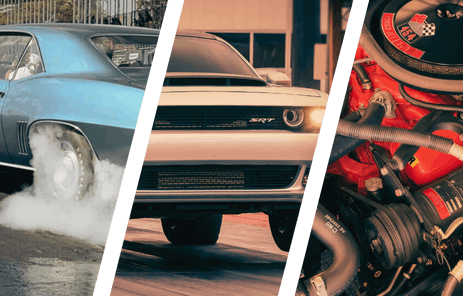There is a lot to set up a chassis with the proper geometry and there are many reasons why so many suspensions, both home-brew and OEM don’t perform as well as they could. In this series of videos, Fatman Fabs’ Brent Vandervort weeds through all of the technical jargon to help explain why geometry is so important for communicating information between the steering wheel and the tires’ contact patch.
Books have been written on the art of chassis building and design and this series of videos are not designed to replace all of the correct information out there already. These videos are part of a seminar that Brent hosted during the HRIA Training Day at the 2014 Autorama show in Detroit. While the videos were posted to Fatman Fabrications’ YouTube channel over six years ago, Brent pretty much sums up the timeliness of the information by saying, “The laws of geometry haven’t changed!”
Math Not Marketing
Brent explains that the reason for the seminar isn’t for marketing or to make super-performing suspensions for Sebring, Daytona, or Indy, but instead to help individuals understand the principles behind how a car’s suspension works as a system and why placement of various components matter. The premise is merely to get the car to go where you want it and make input from the steering wheel to decide which way the car goes, not the driving conditions.
httpv://youtu.be/MpMgwbn6ctU
Brent also explains that there are items readily available that do a good job of taming down a vehicle’s driving characteristics, but if you get the base geometry correct, many of the apparent issues could be reduced or eliminated altogether. The benefits of getting the base geometry correct instead of adding band-aids mean you won’t need to deal with inherent side-effects an additional component may bring into the equation, such as ride stiffness or the lack of suspension compliance.
What’s In A Name?
As soon as you start talking about suspension setup, terms begin flying around the room like flies around a dead horse on a late-August afternoon. Knowing the terms helps to identify them in written or spoken words, but knowing their effects is much more beneficial when designing a chassis or trying to figure out an issue. Brent takes the time to explain many terms that one will hear with regularity when speaking about chassis setup but also takes more time to explain why each item is important and how it affects a chassis operation.
httpv://youtu.be/jQLGzu2jRqc
Like the geometry that has been around since before the Egyptians crafted the pyramids, many of these terms (and their effects) have been around ever since horses were pulling buggies. Brent goes on to describe how earlier chassis designers knew of these characteristics but was not concerned because of the inherent limitations of the extant tires, wheels, and powertrains.
The laws of geometry haven’t changed!- Brent Vandervort, Fatman Fabrication
As hot rodders began modifying their rides to increase performance and traction, those very modifications would carry with them tyrannical symptoms of incorrect chassis setup. The “improvements” would push the vehicle into adverse situations that were previously negated by the car’s previously-truncated performance envelope. Brent gives his view of why there aren’t many big-block, ’67 Mustangs available for restoration today and it has a lot more to do with their chassis than it does their horsepower.
Putting The Fun In Function
Identifying the issues is only the first step in creating a properly-handling automobile. Then the task becomes how to modify or build the chassis so that the issues are eliminated or reduced. There are many areas that can be modified in the name of better handling and Brent gives his input on what would be the best value for your hard-earned dollar.
httpv://youtu.be/gCrmxK8LOiQ
His emphasis is to build in the correct geometry instead of trying to overcome various symptoms of incorrect geometry with add-ons. While certain components can increase a car’s potential in specific scenarios, if you have the base geometry correct, you can use a component’s design to more finely-tune the car’s handling to your preference. Again, increasing the communication between the steering wheel and the tires.
A Week’s Worth Of “You Learn Something New Everyday”
You’re not going to morph from a string-steering, plywood go-kart creator to famed Indianapolis 500 chassis engineer by watching four videos. But, unless you’re already at or above the level of expertise and years of experience of folks like Brent, there’s a lot you could learn by watching each one of these videos.
httpv://youtu.be/yykuBtgs0II
Besides, right now we’re all seeking ways to stay social while we bide our time, whether in the garage or watching videos. In the case of these videos, we could actually do both and learn a few things in the process!
You might also like
Fix Your Classic Car's Body Roll with BMR's New Sway Bar Kit
BMR Suspension has a new kit to fix the sloppy handling of classic GM cars. This heavy-duty sway bar kit dramatically reduces body roll for better cornering performance.



